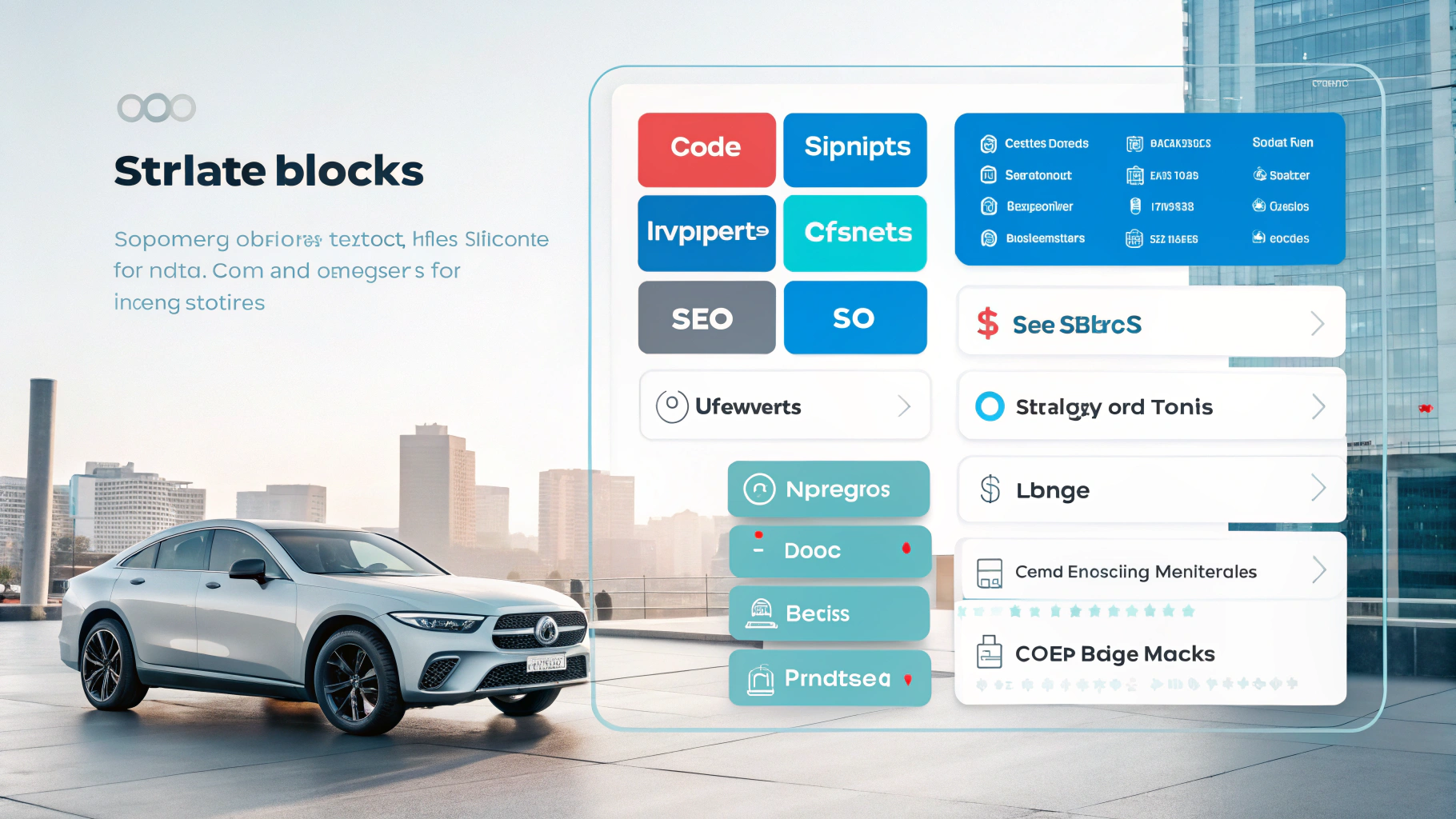Unlock Top Ranks: The SEO Specialist’s Magic Potion
Did you know that 75% of users never scroll past the first page of search results? Yet only 0.78% of Google searchers click on results from the second page. This stark reality highlights why mastering Website Ranking techniques isn’t just a marketing luxury—it’s a business necessity in our digital landscape. Whether you’re a seasoned digital marketer or a business owner managing your online presence, understanding how to elevate your rankings can transform your digital visibility and ultimately your bottom line.
The search visibility game has evolved dramatically in recent years, with algorithms growing increasingly sophisticated. Today’s SEO Strategy, Search Visibility approaches require a nuanced blend of technical knowledge, content expertise, and strategic implementation. Let’s dive into what truly drives modern Website Ranking and uncover the specialist techniques that deliver measurable results.
Why It Matters

The significance of strong Website Ranking extends far beyond vanity metrics. According to recent studies, the first five organic results on Google capture 67.60% of all clicks. This translates directly to business outcomes: higher-ranked sites experience significantly greater visibility, traffic, and conversion potential.
Consider these compelling statistics:
- Businesses that appear on page one of search results are 10x more likely to receive clicks compared to page two results
- 49% of marketers report that organic search delivers the highest ROI of any marketing channel
- 70-80% of users ignore paid search results, focusing exclusively on organic listings
For small and medium businesses especially, effective ranking strategies level the playing field against larger competitors with bigger advertising budgets. As consumer behavior continues shifting toward self-directed research before purchasing decisions, your search visibility directly impacts your revenue potential.
Core Concepts
Understanding Website Ranking begins with grasping how search engines evaluate and rank content. Think of search engines as sophisticated librarians that categorize vast amounts of information based on relevance, authority, and user experience.
The fundamental pillars supporting modern ranking include:
- Relevance: How well your content matches user search intent
- Authority: How trusted your site is within its topic ecosystem
- User Experience: How visitors interact with and navigate your site
- Technical Health: How well your site functions for both users and search crawlers
Each of these pillars requires distinct optimization approaches. For instance, relevance is primarily driven by content quality and keyword optimization, while authority stems from backlink profiles and content credibility signals. User experience encompasses everything from page speed to mobile responsiveness, while technical health includes elements like site architecture and indexability.
Successful SEO Strategy, Search Visibility requires addressing all four pillars simultaneously, creating a comprehensive approach that aligns with evolving algorithm preferences.
Strategy Implementation Guide
Step 1: Conduct Comprehensive Keyword Research
Begin with thorough keyword research focused on user intent. Modern Website Ranking success starts with understanding what your audience is actually searching for. Tools like Ahrefs, SEMrush, or even Google’s Keyword Planner can reveal:
- Search volume for target terms
- Keyword difficulty scores
- Related search queries and questions
- Competitor keyword profiles
Look beyond volume to examine intent patterns, distinguishing between informational, navigational, and transactional searches. Prioritize keywords with reasonable competition levels that precisely match your offering.
Step 2: Optimize On-Page Elements
Once you’ve identified target keywords, integrate them strategically throughout your content:
- Include primary keywords in page titles, meta descriptions, and H1 tags
- Use semantic variations naturally throughout body content
- Optimize image alt text and file names
- Create descriptive, keyword-rich URLs
- Develop internal linking structures that reinforce topic relevance
Remember that modern on-page optimization balances keyword usage with natural language flow and comprehensive topic coverage.
Step 3: Develop Authority-Building Content

Content remains the cornerstone of effective SEO Strategy, Search Visibility. Develop content that:
- Addresses specific user questions comprehensively
- Incorporates research, data, and expert perspectives
- Provides unique insights not available elsewhere
- Follows E-E-A-T principles (Experience, Expertise, Authoritativeness, Trustworthiness)
- Maintains consistent publishing schedules
Prioritize depth over breadth, aiming to create definitive resources that naturally attract backlinks and social sharing.
Step 4: Build Strategic Backlinks
Earning quality backlinks remains crucial for Website Ranking. Implement these proven link-building strategies:
- Create original research or data studies that naturally attract citations
- Develop resource pages that serve as industry references
- Participate in industry interviews, podcasts, and guest posting opportunities
- Leverage broken link building to replace defunct resources
- Build relationships with complementary businesses for collaboration opportunities
Focus on quality over quantity, as a few authoritative links often outperform numerous low-quality ones.
Benefits
Implementing a comprehensive Website Ranking strategy delivers multiple advantages:
- Increased Qualified Traffic: Higher rankings bring visitors actively seeking your solutions
- Enhanced Brand Credibility: Top positions confer implicit trustworthiness
- Improved Conversion Rates: Organic visitors typically convert 2-3x better than paid traffic
- Reduced Acquisition Costs: Organic traffic continues flowing without per-click costs
- Competitive Advantage: Strong rankings create barriers to entry for competitors
- Long-Term Sustainability: Unlike paid campaigns, SEO results compound over time
Organizations implementing systematic ranking strategies typically see traffic increases of 20-30% year-over-year with corresponding revenue growth.
Case Study
A mid-sized B2B software company implemented our comprehensive SEO Strategy, Search Visibility approach with remarkable results. Initially ranking on page three for their core service terms, they:
- Restructured their content architecture around customer pain points
- Developed in-depth guides addressing specific industry challenges
- Optimized technical elements for improved crawlability
- Built strategic partnerships with industry publications
Within six months, their core keywords moved to first-page positions. The impact:
- 143% increase in organic traffic
- 67% more inbound leads
- 28% higher close rate on SEO-sourced leads
- $237,000 estimated annual savings in paid acquisition costs
This transformation illustrates how systematic ranking improvements directly impact business outcomes.
Tools & Resources
These essential tools support effective Website Ranking initiatives:
- SEMrush/Ahrefs: Comprehensive keyword research and competitor analysis
- Screaming Frog: Technical SEO auditing
- Google Search Console: Performance monitoring and indexation management
- PageSpeed Insights: Site speed optimization
- Surfer SEO: Content optimization and SERP analysis
- BuzzSumo: Content research and social engagement analysis
- HARO (Help a Reporter Out): Media relationship building
Most offer free trials or limited free versions to help you evaluate their fit for your specific needs.
Common Mistakes to Avoid
Even experienced practitioners make these Website Ranking mistakes:
- Keyword Stuffing: Overusing keywords damages readability and triggers penalties
- Ignoring Mobile Experience: Mobile-first indexing means desktop-only optimization is insufficient
- Neglecting Technical Foundations: Site speed, crawlability, and structure issues undermine content efforts
- Pursuing Quantity Over Quality: Publishing frequent, shallow content rarely outperforms fewer, more comprehensive resources
- Buying Low-Quality Links: Artificial link building schemes risk severe penalties
- Ignoring Analytics: Failing to measure and adjust based on performance data wastes resources
Avoiding these common pitfalls significantly improves your ranking potential.
Future Trends
The SEO Strategy, Search Visibility landscape continues evolving. Watch for these emerging trends:
- AI-Generated Content Evaluation: Search engines are increasingly sophisticated in identifying and potentially devaluing purely AI-generated content
- Expanded Video Search Importance: Video optimization becoming increasingly crucial for comprehensive ranking strategies
- Voice Search Optimization: Natural language patterns gain importance as voice interfaces proliferate
- User Journey Optimization: Rankings influenced by entire customer journeys rather than individual page metrics
- E-E-A-T Amplification: Experience joining Expertise, Authoritativeness, and Trustworthiness as critical ranking factors
Staying ahead of these trends gives forward-thinking businesses significant competitive advantages.
Conclusion
Mastering Website Ranking requires blending technical expertise, content excellence, and strategic patience. The organizations that succeed recognize that rankings aren’t just about algorithms—they’re about connecting valuable solutions with searching users at precisely the right moment.
By implementing the strategies outlined in this guide and avoiding common pitfalls, you’ll build sustainable search visibility that drives meaningful business results. Remember that ranking improvement is an ongoing process rather than a one-time project, requiring consistent attention and adaptation to changing search landscapes.
Ready to transform your online visibility? Begin by auditing your current positions, identifying priority keywords, and developing systematic optimization plans. Your investment in strategic ranking improvements today will generate compounding returns for years to come.
FAQs
How long does it take to improve website rankings?
Meaningful ranking improvements typically require 3-6 months of consistent effort. Highly competitive terms may take longer, while local or niche terms can show faster results.
Can I improve rankings without building backlinks?
While on-page optimization and content quality can deliver some improvements, competitive terms almost always require strategic link building for top positions.
How important is site speed for rankings?
Site speed is both a direct ranking factor and an indirect one through its impact on user experience metrics. Pages loading in under 2 seconds have significant advantages.
Should I focus on broad keywords or long-tail terms?
A balanced approach works best: target strategic broad terms for visibility while capturing more specific long-tail terms for conversion potential.
How does social media impact website rankings?
While social signals aren’t direct ranking factors, social platforms increase content visibility, generate links, and improve brand signals that indirectly benefit rankings.

